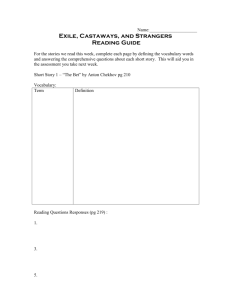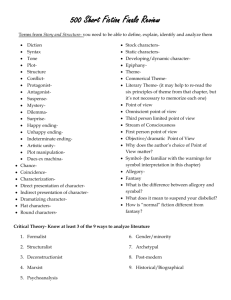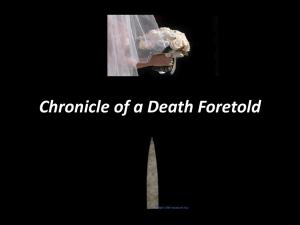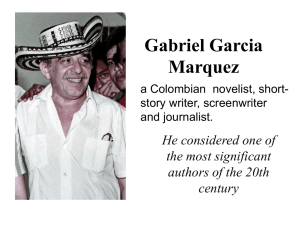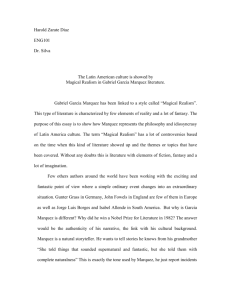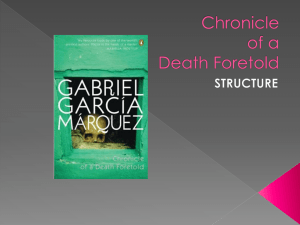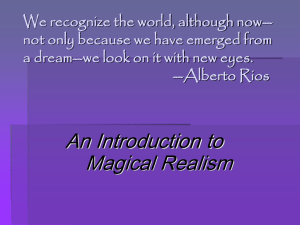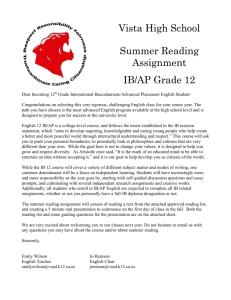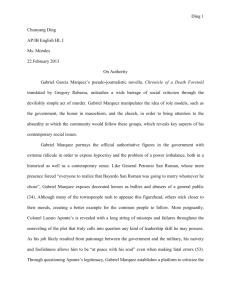Collected Novellas
advertisement
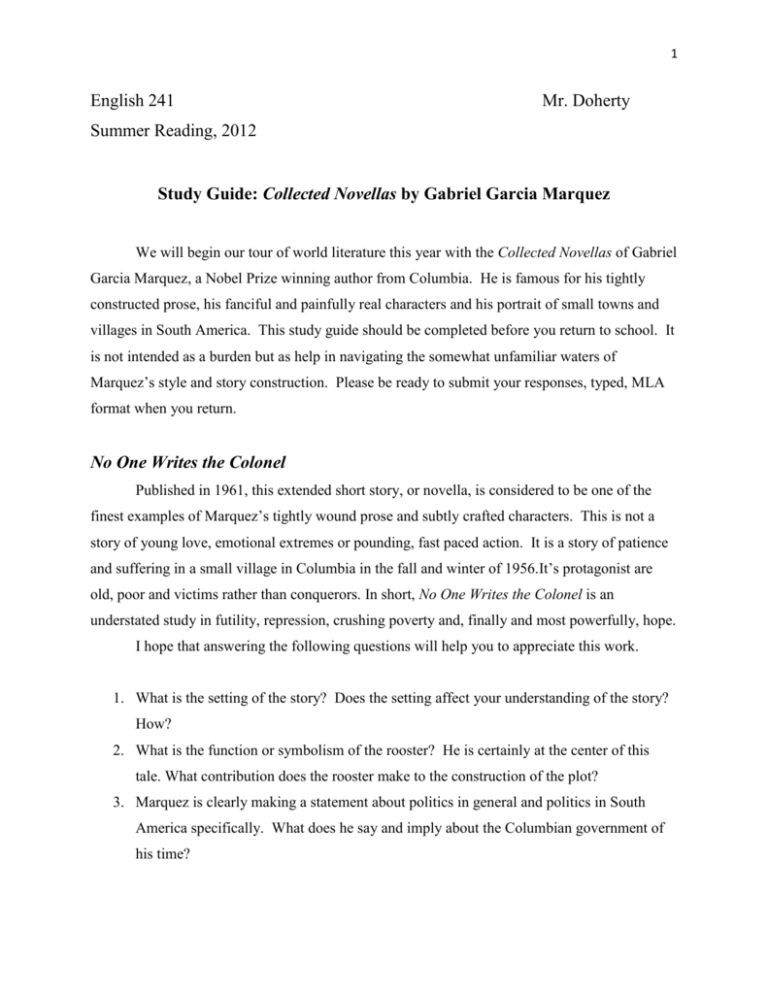
1 English 241 Mr. Doherty Summer Reading, 2012 Study Guide: Collected Novellas by Gabriel Garcia Marquez We will begin our tour of world literature this year with the Collected Novellas of Gabriel Garcia Marquez, a Nobel Prize winning author from Columbia. He is famous for his tightly constructed prose, his fanciful and painfully real characters and his portrait of small towns and villages in South America. This study guide should be completed before you return to school. It is not intended as a burden but as help in navigating the somewhat unfamiliar waters of Marquez’s style and story construction. Please be ready to submit your responses, typed, MLA format when you return. No One Writes the Colonel Published in 1961, this extended short story, or novella, is considered to be one of the finest examples of Marquez’s tightly wound prose and subtly crafted characters. This is not a story of young love, emotional extremes or pounding, fast paced action. It is a story of patience and suffering in a small village in Columbia in the fall and winter of 1956.It’s protagonist are old, poor and victims rather than conquerors. In short, No One Writes the Colonel is an understated study in futility, repression, crushing poverty and, finally and most powerfully, hope. I hope that answering the following questions will help you to appreciate this work. 1. What is the setting of the story? Does the setting affect your understanding of the story? How? 2. What is the function or symbolism of the rooster? He is certainly at the center of this tale. What contribution does the rooster make to the construction of the plot? 3. Marquez is clearly making a statement about politics in general and politics in South America specifically. What does he say and imply about the Columbian government of his time? 2 4. The colonel is the central character of this story. In any good work of fiction, the protagonist should be changed by his struggles. Is the Colonel changed? How? Why? 5. What were the circumstances of the Colonel’s son’s death? Vocabulary: Please have written definitions for each of the following words as part of your completed study guide: pendulum expansive dejected asthma privy colonel Pianola Leaf Storm Published in 1955 and translated into English in 1972, Leaf Storm met with indifferent critical response when first published…it took seven years to find a publisher. It has come to be recognized as one of Marquez’s signature works. 1. How did the Doctor die? Was he mourned greatly? 2. The story has several narrators. Name three and write a short explanation of the difference (s) between them. 3. Marquez uses a dramatic scene to introduce his story and then traces backwards. List three incidents from the plot that lead up to the introductory scene. 4. The story has three basic subject matters…death, solitude and war. Briefly state themes for the story, each based on each of these elements. This would be a total of three. Remember, a theme is an author’s comment on a given subject matter. For example, the theme of Romeo and Juliet is not love. That is the subject matter. The theme is what the author says about love, “star crossed” or otherwise. 3 Vocabulary: implacable impetuous dregs decomposition decipher cowardice organic labyrinth listlessly compassion Chronicle of a Death Foretold Chronicle of a Death Foretold is the story of the murder of a young man, Santiago Nasar, and the events leading to his death. It is a tale of arranged marriages, betrayal and honor killings. In short, it has all of the elements of a great detective tale, but it isn’t. The author is not concerned with the “what” as much as he is concerned with the “why”. Keep that in mind as you read. 1. This novella is rich in characters. Give a brief description of the following characters. This exercise should help you to keep them straight in your mind. Santiago Nasar Angela Vicario Pedro Vicario Pablo Vicario Bayardo San Ramos Purissima del Carmen Poncio Vicario Placido Lenaro 4 2. Women play key roles in this tale. Women in power are especially influential. Who are the most powerful women in the story? What is the source of their power? How do they exercise this power? 3. Gabriel Garcia Marquez is famous for his use of “magical realism”. Like many Latin American writers, he has been inextricably linked to this style of literature known as "magical realism." Literature of this type is usually characterized by elements of the fantastic woven into the story with a diminished sense of presentation or surprise. In short, people who would not question a dog flying if God wills it, will constantly doubt telephones, airplanes, etc. How does this technique or motif appear in this story? How does it affect your reading of the tale? Can you “suspend your disbelief” long enough to accept this device in this story?
